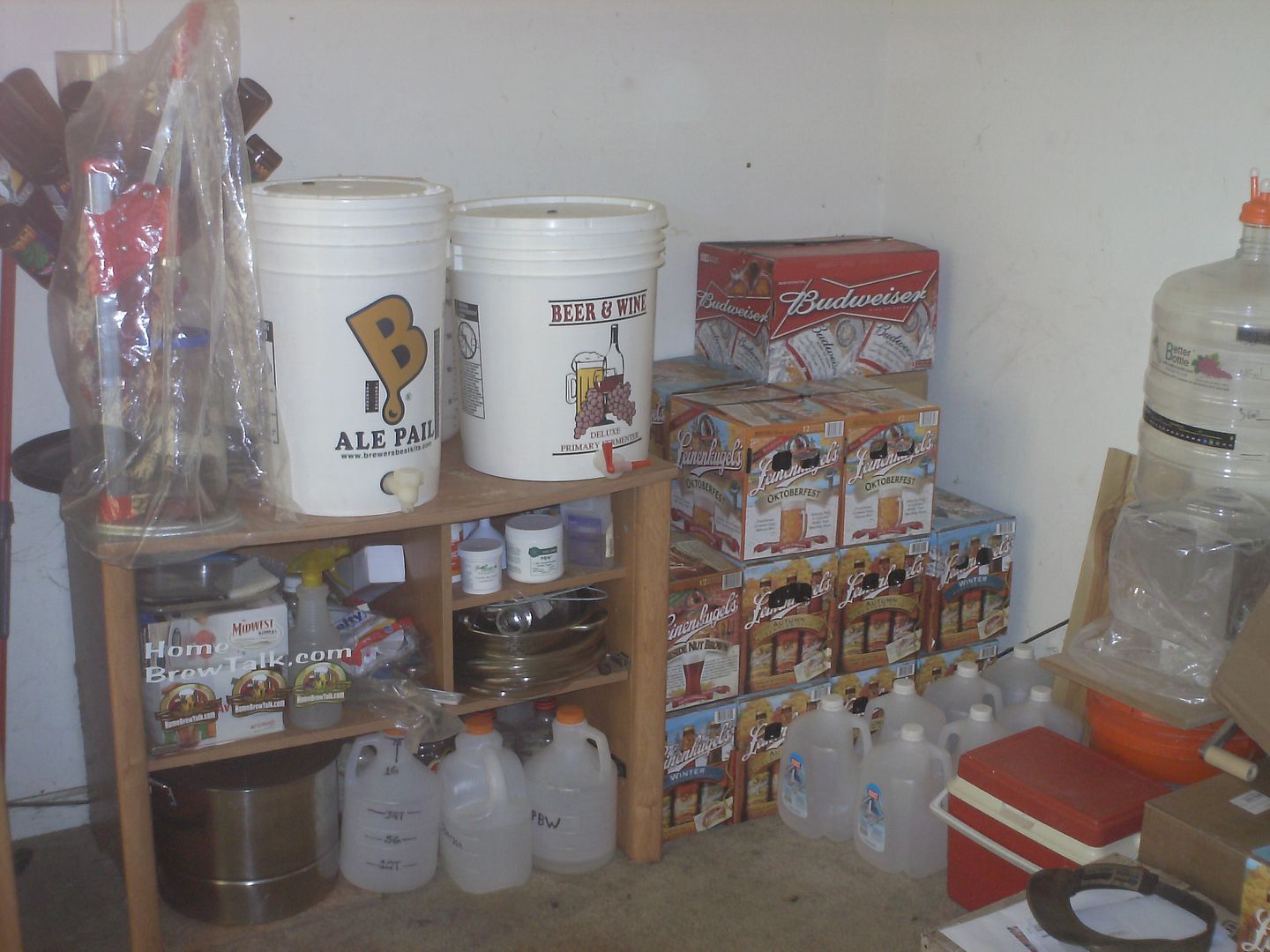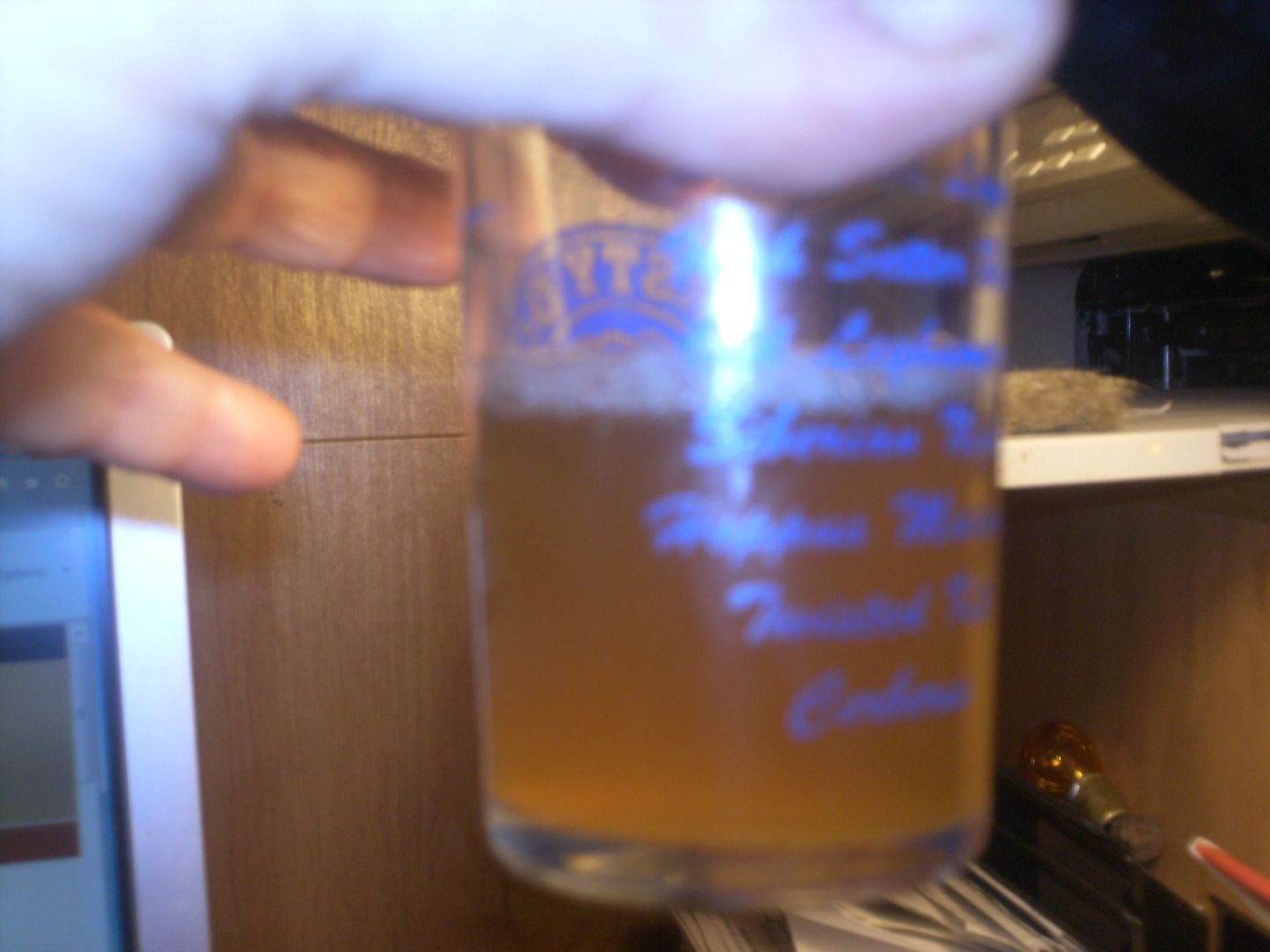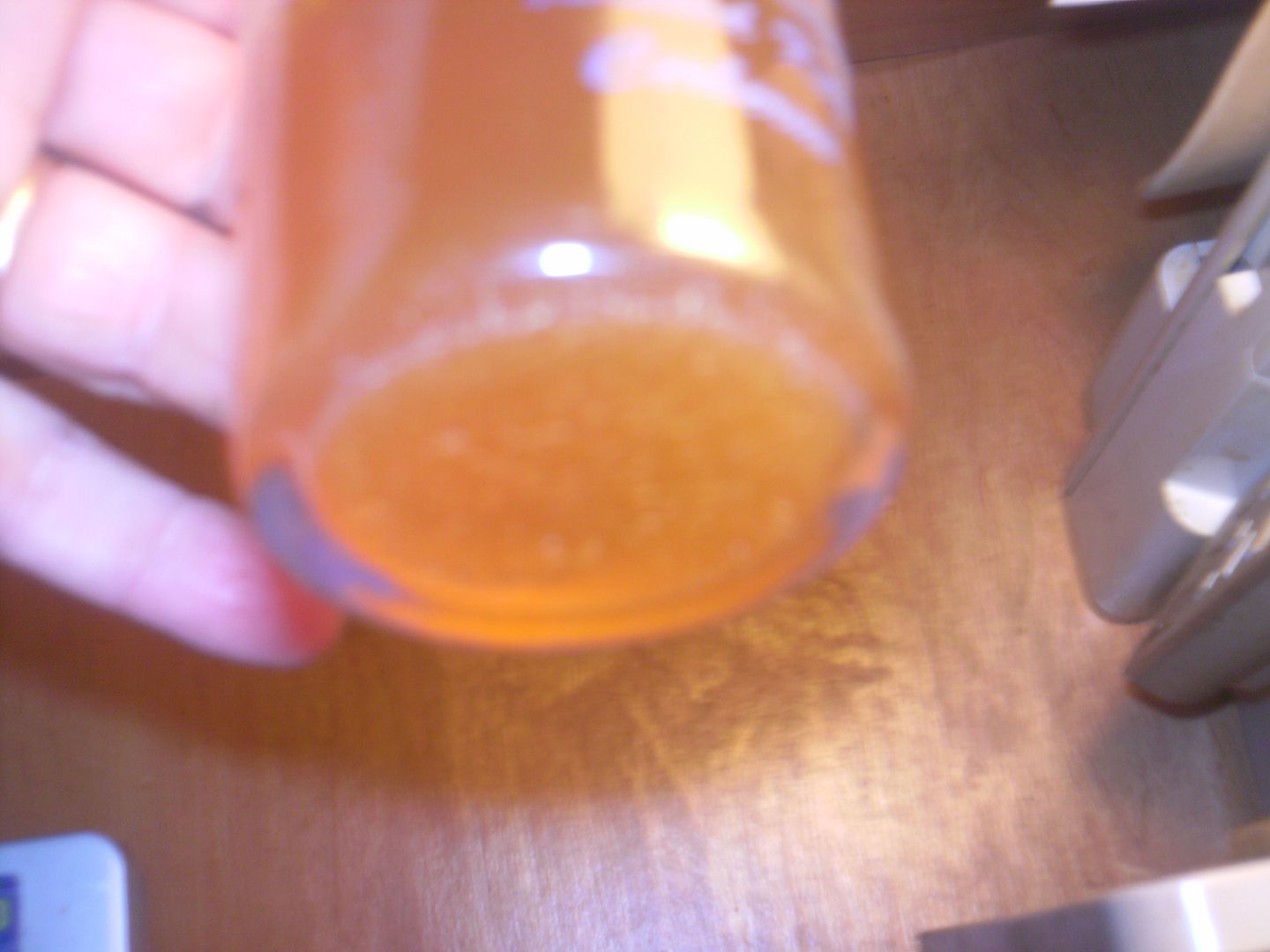Well,for some reason,I finally got a funky infection. Not sure how? I went to dry hop late last Saturday afternoon,& saw the ice pack sorta moldy stuff on top. But it had a few large lacto-like bubbles on it too. No spider webbing though. So I skimmed it,dropped in the dry hop sack that had been soaked in Starsan,& sprayed the surface with Starsan just as an experiment. Here's what it looks like now;
http://[URL=http://s563.photobucket.com/user/unionrdr/media/PICT0004_zpsdf2ab485.jpg.html] [/URL]
[/URL]
http://[URL=http://s563.photobucket.com/user/unionrdr/media/PICT0003_zps902eee48.jpg.html] [/URL] What looks like webby lines is rinkles in the gunk from opening it.
[/URL] What looks like webby lines is rinkles in the gunk from opening it.
Last week gravity was 1.015,today,it's 1.012. Here's the glass I dumped the hydrometer sample in with what looks like yeast settling on the bottom;
http://[URL=http://s563.photobucket.com/user/unionrdr/media/PICT0005_zps9ca1dc1a.jpg.html] [/URL] It tastes a little bitter & green,but you can taste the hops. A bit of dryness in the mouth. But it basically tastes ok. I was thinking of bottling it at 2.3 volumes of co2,rather than 2.6 to allow for further fermentation actions. Any thoughts? I can't make up my mind what to do,as I hate to dump a pricy batch...
[/URL] It tastes a little bitter & green,but you can taste the hops. A bit of dryness in the mouth. But it basically tastes ok. I was thinking of bottling it at 2.3 volumes of co2,rather than 2.6 to allow for further fermentation actions. Any thoughts? I can't make up my mind what to do,as I hate to dump a pricy batch...
http://[URL=http://s563.photobucket.com/user/unionrdr/media/PICT0004_zpsdf2ab485.jpg.html]
 [/URL]
[/URL]http://[URL=http://s563.photobucket.com/user/unionrdr/media/PICT0003_zps902eee48.jpg.html]
 [/URL] What looks like webby lines is rinkles in the gunk from opening it.
[/URL] What looks like webby lines is rinkles in the gunk from opening it.Last week gravity was 1.015,today,it's 1.012. Here's the glass I dumped the hydrometer sample in with what looks like yeast settling on the bottom;
http://[URL=http://s563.photobucket.com/user/unionrdr/media/PICT0005_zps9ca1dc1a.jpg.html]
 [/URL] It tastes a little bitter & green,but you can taste the hops. A bit of dryness in the mouth. But it basically tastes ok. I was thinking of bottling it at 2.3 volumes of co2,rather than 2.6 to allow for further fermentation actions. Any thoughts? I can't make up my mind what to do,as I hate to dump a pricy batch...
[/URL] It tastes a little bitter & green,but you can taste the hops. A bit of dryness in the mouth. But it basically tastes ok. I was thinking of bottling it at 2.3 volumes of co2,rather than 2.6 to allow for further fermentation actions. Any thoughts? I can't make up my mind what to do,as I hate to dump a pricy batch...













































![Craft A Brew - Safale BE-256 Yeast - Fermentis - Belgian Ale Dry Yeast - For Belgian & Strong Ales - Ingredients for Home Brewing - Beer Making Supplies - [3 Pack]](https://m.media-amazon.com/images/I/51bcKEwQmWL._SL500_.jpg)














 :rockin: Gunna go ahead & bottle it today. Hopefully,it gets better in bottles full of co2?...
:rockin: Gunna go ahead & bottle it today. Hopefully,it gets better in bottles full of co2?...